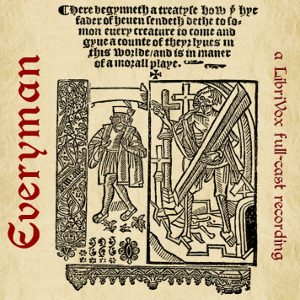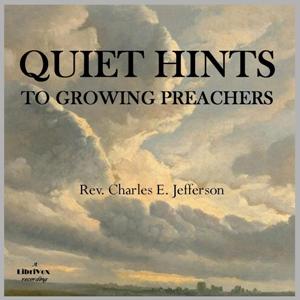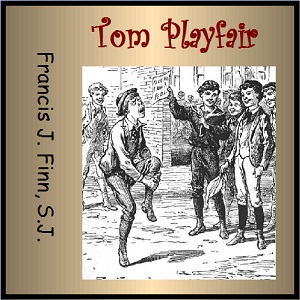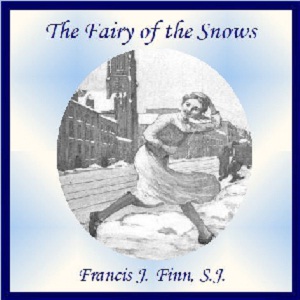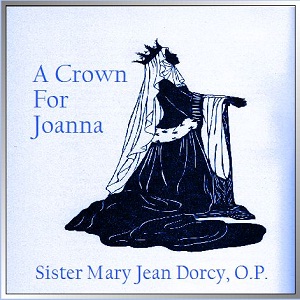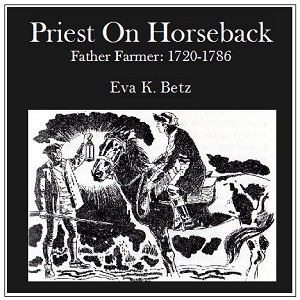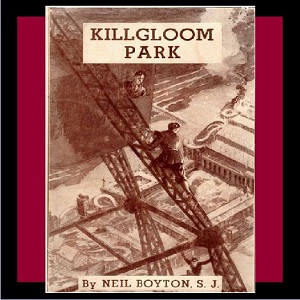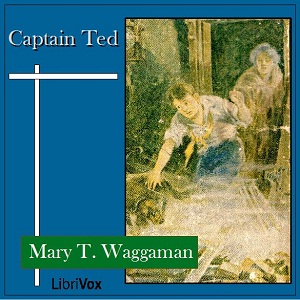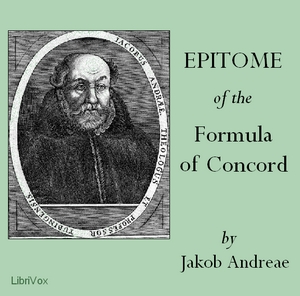A collection of essays on the Hindu/Buddhist view of humankind's place in the universe. As the author says in his introduction: "in these papers, it may be hoped, western readers will have an opportunity of coming into touch with the ancient spirit of India as revealed in our sacred texts and manifested in the life of to-day."Most of the essays were given as lectures before Harvard University in 1916 or before. (Summary by Peter Yearsley)
8 episodes
Esther Ried Randall tries to live up to her parents' expectations and the name she's been given, but her religion is a chore. Will she learn the lesson of faith that Ester did? Fifth and final book in the Ester Ried series. Authored by Isabella M. Alden under the pen name “Pansy.” (Summary written by Tricia G)
30 episodes

Institutes of the Christian Religion is John Calvin's seminal work on Protestant systematic theology. Highly influential in the Western world and still widely read by theological students today, it was published in Latin in 1536 and in his native French in 1541, with the definitive editions appearing in 1559 (Latin) and in 1560 (French).The book was written as an introductory textbook on the Protestant faith for those with some learning already and covered a broad range of theological topics from the doctrines of church and sacraments to justification by faith alone and Christian liberty, and it vigorously attacked the teachings of those Calvin considered unorthodox, particularly Roman Catholicism to which Calvin says he had been "strongly devoted" before his conversion to Protestantism. The over-arching theme of the book – and Calvin's greatest theological legacy – is the idea of God's total sovereignty, particularly in salvation and election.The Institutes are a primary reference for the system of doctrine adopted by the Reformed churches, usually called Calvinism.Book One of the Institutes treats of the knowledge of God, considered as the Creator, Preserver, and Governor of the world, and of every thing contained in it. (Summary from Wikipedia & preface)
Book 2 may be found here: LINKBook 3 may be found here: LINKBook 4 may be found here: LINK
29 episodes
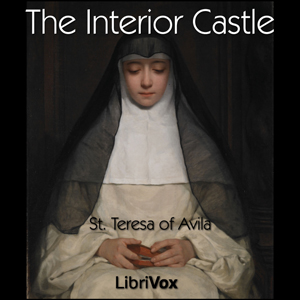
El Castillo Interior or Las Moradas (trans.:The Interior Castle or The Mansions) was written by Saint Teresa of Ávila in 1577. After being ordered to write her autobiographical La Vida de la Santa Madre Teresa de Jesús (The Life of S. Teresa of Jesus), Teresa was hesitant to begin writing again on her views of the perfection found in internal prayer. In the hands of the Inquisition at that time, her Life was commonly believed to be the weight in the scale of whether to call her experiences heretical or not. Her humility and claims that, “I am not meant for writing; I have neither the health nor the wits for it,” almost prevented Teresa from composing The Interior Castle. However, according to a letter written by Fray Diego, one of Teresa’s former confessors, Teresa was finally convinced to write her book after a she received a vision from God. Diego wrote that God revealed to Teresa,
"...a most beautiful crystal globe, made in the shape of a castle, and containing seven mansions, in the seventh and innermost of which was the King of Glory, in the greatest splendour, illumining and beautifying them all. The nearer one got to the centre, the stronger was the light; outside the palace limits everything was foul, dark and infested with toads, vipers and other venomous creatures."
With that, Interior Castle was born. It contained the basis for what she felt should be the ideal journey of faith, comparing the contemplative soul to a castle with seven successive interior courts, or chambers, analogous to the seven heavens. Teresa's consumption of chivalric romances as a child subsequently influenced such imagery, which is prevalent in many of her mystical works. It is also not unduly speculative that living in a walled city like Ávila must have influenced her thinking. The concept of an "interior" life is still important in Spanish thinking in the twenty-first century.
An English translation was published in London in 1852.
(from wikipedia.org)
29 episodes
»Wissen Sie, sie sind jetzt beide in dem Alter, die Kinder, wo sie den ganzen Tag fragen. Zum Beispiel: Spricht der liebe Gott auch chinesisch? und: Wie sieht der liebe Gott aus? Immer alles vom lieben Gott! Darüber weiß man doch nicht Bescheid –.« »Nein, allerdings,« stimmte ich bei, »man hat da gewisse Vermutungen...« »Oder von den Händen vom lieben Gott.«
»Ja« – beeilte ich mich anzufügen, – »von den Händen ist mir allerdings einiges bekannt. Zufällig – ich will Ihnen erzählen, was ich weiß. Wenn Sie einen Augenblick Zeit haben, ich begleite Sie bis zu Ihrem Hause, das wird gerade reichen.« (Rainer Maria Rilke)
13 episodes

Marie Francoise Therese Martin, affectionately known as 'The Little Flower', was born on January 2, 1873, in Alencon, France to Louis Martin and Zelie Guerin. She was the youngest and one of five surviving sisters of the nine Martin children. When Therese was 3, her mother died. Louis Martin moved his family to Lisieux to be closer to his late wife's brother and his family. It was there that Therese's sister, Pauline, entered the Carmel at Lisieux on October 2, 1882. Therese at that time also heard the Divine Call to religious life. Therese entered the Carmel on April 9, 1888, after much oppostion to her entering at the age of 15. It was there that she wrote L'Histoire d'une Ame (The Story of a Soul) through obedience. Eventually, Therese's other sisters entered the religious life, one at the Carmel of Lisieux and the other became a Poor Clare at the Visitation Convent at Caen. Therese died on September 30, 1897, at the Carmel of Lisieux of tuberculosis. She was beatified on April 29, 1923 and canonized on May 17, 1925. (Summary written by Ann Boulais.)
13 episodes
Berkeley uses Hylas as his primary contemporary philosophical adversary, John Locke. A Hylas is featured in Greek mythology and the name Hylas is derived from an ancient Greek word for "matter" which Hylas argues for in the dialogues. Philonous translates as "lover of mind." In The First Dialogue, Hylas expresses his disdain for skepticism, adding that he has heard Philonous to have "maintained the most extravagant opinion... namely, that there is no such thing as material substance in the world." Philonous argues that it is actually Hylas who is the skeptic and that he can prove it. Thus, a philosophical battle of wit begins.
(Summary from Wikipedia)
6 episodes
A few years before James E. Talmage was called to serve as an apostle for the Church of Jesus Christ of Latter-day Saints (also known as the "Mormon" church), he gave a series of lectures at universities such as the University of Michigan and Cornell, describing the history of the Church. These lectures were later compiled and published as 'The Story of "Mormonism."' It is a concise, yet informative summary for all interested in learning the history and beliefs of the "Mormon" church. (Summary by Nathan Markham)
5 episodes
This is a collection of short (15 minute or less readings) works in English suitable for a coffee break at work or a short commuter ride. The theme for this collection is Multi-Faith in various genres.(Summary by BellonaTimes)
10 episodes
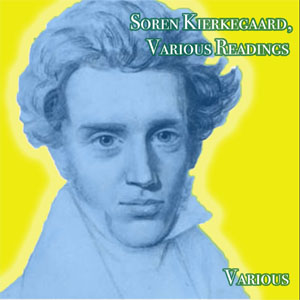
The writings listed here represent books about Soren Kierkegaard. A fragment of his work, On the Dedication to "That Single Individual", has made it to the public domain. Who was Soren Kierkegaard? He was a Danish philosopher and religious author; b. Copenhagen May 6, 1813; d. there Nov. 11, 1855. His father, Michael, a clothing merchant, once cursed God when he was young. This one incident caused him so much distress that it affected him with a deep melancholy, which he transferred to poor Soren. Michael was an evil man. He tricked Soren into thinking that the whole world existed in his own living room by taking him for imaginary walks about the neighborhood, or anywhere Soren wanted to go, as long as it existed in his imagination only. Later in life, when Soren was on his own, he rarely left Copenhagen, but he did walk about the streets and greet passersby, discussing events of the day. After 6 years of “splendid inactivity” he obtained his degree in Theology from the University of Copenhagen with the submission of his thesis paper in 1841, On the Concept of Irony with Continual Reference to Socrates. Just before graduation he fell in love with Regine Olsen and proposed that they marry. She accepted, but Soren was unable to live up to the requirements of marriage and broke off the engagement after a short period. He lived a life of despair afterward. His father, Regine, and Socrates were the major influences in his life. So say all the authors in the following readings, but I disagree.
Soren considered a variety of callings, he could be philosopher, a scientist, or a preacher, but he ultimately decided that Christianity was his interest. He wondered if J. P. Mynster, bishop of Zealand and head of the National Church of Denmark, was preaching true Christianity or not. He decided at this point that his “task is a Socratic task, to revise the conception of what it means to be a Christian”. He was interested only in the “How” of Christianity, not the “What” of Christianity. He became an author, an author who was always “in the process of becoming” what he would be. He became many authors, Victor Eremita, Johannes de Silentio, Johannes Climacus, Vigilius Haufniensis, Nicolaus Notabene, Hilarius Bookbinder, Frater Taciturnus, and Soren Kierkegaard. All of them wrote books between the years 1843 and 1855. He used his imagination to create each author as an existing individual Human being, one who exists, “between the esthetic and the ethical” where “the esthetic is existing; the ethicist is struggling against the religious”, as one “aware of the religious-and the leap” of faith, one “who ordinarily despairs of nothing, despairs of repetition”, one who has “used a love affair in relation to what it means to exist”, one who believed “that in relation to God we are always in the wrong,” one who cries to God “I cannot understand you, but I will love you” one who as "the ethicist, in despair, has chosen himself out of terror of having himself" and finally as one who said “that truth is objectively a paradox shows precisely that subjectivity is truth” so “Only truth that builds up is truth for you”.
The authors are all in agreement that Soren's father, Regine, and Socrates were influential in his life. None of them were able to state that Jesus Christ had any influence upon him at all. Soren Kierkegaard said, "God is not like a king in a predicament, who says to the highly trusted Minister of the Interior, “You must do everything, you must create the atmosphere for our proposal and win public opinion to our side.” "But in relation to God, there are no secret instruction for a human being any more than there are any backstairs. Even the most eminent genius who comes to give a report had best come in fear and trembling, for God is not hard pressed for geniuses. He can create a few legion of them if needed." God wants each individual to examine to judge and to decide. http://www.archive.org/details/forselfexaminati011847mbp
Here is a link to to some of his works http://www.religion-online.org/listbycategory.asp?Cat=110 one to a biography http://www.stolaf.edu/collections/kierkegaard/aboutkierk.html - and a link to Kierkegaard reorganized (systemetized?) - http://www.plough.com/ebooks/Provocations.html - (Summary by Soupy)
17 episodes
A Holy Day in 1495. Join the crowd streaming towards a temporary outdoor stage and be entertained (and maybe even instructed) by a performance of Everyman by the Guild of LibriVox Readers. Cast:(in order of appearance)Narrator - AnniseMessenger - ElliGod - Neeru IyerDeath - Denny SayersEveryman - Bob ShearmanFellowship - Tricia GCousin - Chris CaronKindred - David LawrenceGoods - Elizabeth KlettGood-Deeds - Marian MartinStrength - David ColeDiscretion - Laurie Anne WaldenFive-Wits - Barry EadsBeauty - Lucy PerryKnowledge - Arielle LipshawConfession - Ruth GoldingAngel - KalyndaDoctor - Cori Samuel "Let the Play Begin" (summary by Annise)
1 episodes
Ellen Gould White (1827 - 1915) was a prolific Christian writer, authoring 40 books in her lifetime. She was active in the Millerite movement, and was one of the principle founders of the Seventh Day Adventist Church.
Steps to Christ, first published in 1892, is her most popular book. It has been translated into more than 70 languages. The theme of the book is how to come to know Christ better. (Summary by Donald Hines)
13 episodes

The Tiruppavai is a collection of thirty stanzas (paasuram) in Tamil written by Andal, in praise of the God Tirumal or Vishnu. It is part of Divya Prabandha, a work of the twelve Alvars, and is important in Tamil literature. (Summary from Wikipedia)
ஆண்டாள் அருளிச்செய்தத் திருப்பாவை
பன்னிரண்டு ஆழ்வார்களில் ஒரே பெண் ஆழ்வாரான ஆண்டாள் (சூடிக்கொடுத்த சுடர்கொடி), திருமாலையே எண்ணி இயற்றிய இந்நூல் முப்பது பாசுரங்களைக் கொண்டது. பன்னிரண்டு ஆழ்வார்களின் தொகுப்பான திவ்யப்பிரபந்தத்தின் ஒரு முக்கியப் பகுதியாகவும், தமிழ் இலக்கியத்தில் மிக முக்கியமான நூலாகவும் இந்நூல் விளங்குகிறது.
திருமாலுக்கு உகந்த மாதமான மார்கழி மாதத்தில் அவருக்கு செய்வனவற்றைப் பக்தியுடன் செய்து வந்தால் அத்தனை அருளும் நம்மை வந்து சேரும் என்பது ஆண்டாளின் நம்பிக்கை. இதனால், காலையில் திருமாலை வேண்ட, உறங்கிக் கொண்டிருந்தத் தன் தோழிகளையும் இப்பாடல்களைப் பாடியே எழுப்பித் தன்னுடன் குளத்தில் குளிக்கவும், மலர்களைச் சேகரிக்கவும், மாலையாய்த் தொடுக்கவும், திருமாலைத் தரிசிக்கவும் அழைத்துச் சென்றார், ஆண்டாள்.
மார்கழி மாதத்தின் போது கன்னிப் பெண்கள் இன்னமும் இந்தப் பாடல்களைப் பாடித்தான் தனக்கு ஒரு நல்ல வாழ்க்கை அமைய வேண்டும் என்று வேண்டுகிறார்கள்.
(நீரு ஐயர் எழுதிய முகவுரை)
6 episodes
The Conflict of Adam and Eve with Satan is a Christian pseudepigraphical work found in Ge'ez, translated from an Arabic original and thought to date from the 5th or 6th century AD. It was first translated from the Ethiopic version into German by August Dillmann. It was first translated into English by S. C. Malan from the German of Ernest Trumpp. The first half of Malan's translation is included as the "First Book of Adam and Eve" and the "Second Book of Adam and Eve" in The Lost Books of the Bible and the Forgotten Books of Eden. Books 1 and 2 begin immediately after the expulsion from the Garden of Eden and end with the testament and translation of Enoch. Great emphasis is placed in Book 1 on Adam's sorrow and helplessness in the world outside the garden. (Summary by Wikipedia)
9 episodes
This is the second book of the much loved Elsie Dinsmore series and starts where the first book left off. Elsie is still recuperating from her weakness, with her kind and indulgent father by her side.
The story revolves around how a strong bond of love and understanding takes root between the father and daughter, as they holiday at Roselands, and visit exciting places, with some of our favorite friends from the first book, Mr. Travilla, Adelaide, Chloe, Lora and the others. (Summary by Neeru Iyer)Previous book in series: Elsie Dinsmore
Next book in series: Elsie's Girlhood
26 episodes
Charles Edward Jefferson was pastor of the Broadway Tabernacle in Brooklyn, New York for 33 years. In Quiet Hints, published in 1901, he provided guidance to young preachers on what we would today call ministerial deportment, an old-fashioned word that refers to how a man carries himself, how he presents himself, his manners, his bearing, his habits, and his whole approach to life. Jefferson wrote in short, pithy statements that encapsulate practical truth in just a few words. (Summary by MaryAnn)
26 episodes

Institutes of the Christian Religion is John Calvin's seminal work on Protestant systematic theology. Highly influential in the Western world and still widely read by theological students today, it was published in Latin in 1536 and in his native French in 1541, with the definitive editions appearing in 1559 (Latin) and in 1560 (French).The book was written as an introductory textbook on the Protestant faith for those with some learning already and covered a broad range of theological topics from the doctrines of church and sacraments to justification by faith alone and Christian liberty, and it vigorously attacked the teachings of those Calvin considered unorthodox, particularly Roman Catholicism to which Calvin says he had been "strongly devoted" before his conversion to Protestantism. The over-arching theme of the book – and Calvin's greatest theological legacy – is the idea of God's total sovereignty, particularly in salvation and election.The Institutes are a primary reference for the system of doctrine adopted by the Reformed churches, usually called Calvinism. Book Three of the Institutes, "which contains a full exposition of the Third Part of the Apostles’ Creed, treats of the mode of procuring the grace of Christ, the benefits which we derive and the effects which follow from it, or of the operations of the Holy Spirit in regard to our salvation." (Summary from Wikipedia & Book 3 Argument)
47 episodes
Ellen Gould White (1827 - 1915) was a prolific Christian writer, authoring 40 books in her lifetime. She was active in the Millerite movement, and was one of the principle founders of the Seventh Day Adventist Church. The Desire of Ages, first published in 1898, tells the story of the life of Jesus Christ in loving detail. It is the third book in her five volume "Conflict of the Ages" series. (Summary by Donald Hines)
87 episodes
In 1770, Baron D'Holbach published his masterpiece, "Systeme de la Nature", which for a long time passed as the posthumous work of M. de Mirabaud. That text-book of "Atheistical Philosophy" caused a great sensation, and two years later, 1772, the Baron published this excellent abridgment of it, freed from arbitrary ideas; and by its clearness of expression, facility, and precision of style, rendered it most suitable for the average student. This text is based on an undated English translation of "Le Bon Sens" published c. 1900. The name of the translator was not stated. (Summary from editor's preface)
21 episodes
Tom Playfair; Or Making a Start is a book by a Roman Catholic priest, originally published in 1890, and written for youth ages 9-12.The story opens with 10-year-old Tom Playfair being quite a handful for his well-meaning but soft-hearted aunt. (Tom's mother has died.) Mr. Playfair decides to ship his son off to St. Maure's boarding school — an all-boys academy run by Jesuits — to shape him up, as well as to help him make a good preparation for his upcoming First Communion. Tom is less than enthusiastic, but his adventures are just about to begin: life at St. Maure's will not be dull. (Introduction from Wikipedia)
31 episodes
Hannah Trager published Pictures of Jewish Home-Life Fifty Years Ago in 1926, so the book is a portrait of day to day life for a Jewish family in Jerusalem around 1876. In each chapter, Mr. Jacobs reads a letter from his cousins living in Jerusalem many years earlier, each one teaching his family and friends about a different holiday or tradition of their people. (Introduction by wildemoose)
10 episodes
Anne Catherine Emmerich (1774-1824) was a German Augustinian nun who had visions about Christ's life and death. This book relates her visions regarding the Blessed Virgin Mary, from her marriage to St. Joseph to the events surrounding the birth of Christ.(Introduction by Ann Boulais)
4 episodes
Deeper questions of life and death, and of God’s relationship to man, are explored in this collection of “dreams” by a noted English novelist and literary critic. A man takes an uncertain step into the next world as his life ends – Defendants at the Last Judgment hurl their own accusations at the Judge – An angel arrives on Christmas Eve to guide one soul through a night of despair and doubt – Flowers in a garden contemplate their own mortality – What would it mean if the world renounced Christ, or God took Christ away from the world? – And in a world of the future, pleasure and luxury are pursued … and children are nowhere to be found. (Introduction by D. Leeson)
11 episodes
In this book, Schweitzer traces the historical progress of 'Historical Jesus' research, from Hermann Reimarus in the mid 18th century, to William Wrede at the turn of the 20th. Schweitzer showed how Jesus' image had changed with the times and with the personal proclivities of the various authors. He concluded with his own synopsis and interpretation of what had been learned over the course of the previous century. He took the position that the life of Jesus must be interpreted in the light of Jesus' own convictions, which he characterized as those of late Jewish eschatology. (Introduction from Wikipedia, modified by JoeD)This project was proof listened by Tim Ferreira, Goergedave, Betty M., Phil Chenevert, and Guero.
46 episodes
Have you seen a human fairy? Meet Alice Morrow, the dainty fairy of the snows, who will dance her way right into your heart! Get ready to laugh and cry as you follow the antics and trials of the Morrow family, living in early 20th Century Cincinnati. (Introduction by A.E.)
21 episodes
She was born a princess, heir to her father’s kingdom of Portugal, and she might at will have reigned from almost any throne in Europe. But instead of this, she made what to her world seemed a thoroughly mad choice – for she chose to have a throne in heaven. Today those scepters are dust which she would not accept, and as Blessed Joanna of Portugal she possesses a throne imperishable…
This children’s biography of Blessed Joanna of Portugal was written by Sister Mary Jean Dorcy, a Catholic Dominican Nun. The author is probably best known for her exquisitely intricate paper cutting silhouettes, with which she illustrated her books. (Introduction from the original book and by Maria Therese)
9 episodes
Published posthumously in 1919, this collection of diary entries presents a scathing picture of army life and is said to be one of the most vivid accounts of daily life in the trenches. It chronicles West's increasing disillusion with war and his move toward pacifist and atheist beliefs. The final part consists of his powerful war poems, including God, How I Hate You, You Young Cheerful Men, and Night Patrol. West was killed by a sniper in 1917. In view of some of his poems, one wonders if death was not unwelcome. (Introduction adapted from Wikipedia by Ruth Golding)
6 episodes

Institutes of the Christian Religion is John Calvin's seminal work on Protestant systematic theology. Highly influential in the Western world and still widely read by theological students today, it was published in Latin in 1536 and in his native French in 1541, with the definitive editions appearing in 1559 (Latin) and in 1560 (French).
The book was written as an introductory textbook on the Protestant faith for those with some learning already and covered a broad range of theological topics from the doctrines of church and sacraments to justification by faith alone and Christian liberty, and it vigorously attacked the teachings of those Calvin considered unorthodox, particularly Roman Catholicism to which Calvin says he had been "strongly devoted" before his conversion to Protestantism. The over-arching theme of the book – and Calvin's greatest theological legacy – is the idea of God's total sovereignty, particularly in salvation and election.
The Institutes are a primary reference for the system of doctrine adopted by the Reformed churches, usually called Calvinism.
Book Four of the Institutes discusses "the Church and the Communion of Saints, or of the external means or helps by which God invites us to fellowship with Christ, and keeps us in it." This includes Church government, with scathing denunciations of the Papacy and Catholic Church. (Summary from Wikipedia & TriciaG)
46 episodes
A historical novel for children, which tells the story of several months in the life of the then famous Father Farmer, as he traveled a Mass circuit in Pre-Revolutionary, Colonial America. He faced much danger and and adventure, in order to provide the Mass and the Sacraments to Catholics who had not seen a priest in years.Father Farmer was a real life missionary priest during the 1700’s in what is now New England. In 1779 he was appointed as one of the first trustees of the University of Pennsylvania. He also had a reputation as a philosopher and astronomer in his time, and was a member of the American Philosophical Society. (Introduction by Maria Therese)This recording was read from a hard copy; no online text was available at the time.
15 episodes
Join Angelo Daily and his chums during a fun filled summer at Killgloom Park, a Coney Island, New York amusement park in the 1930's. A runaway tiger! Tracking down a wanted thief! Climbing down a ferris wheel in the middle of the night! These are just a few of the exciting things that happen during this adventurous summer!
The author grew up in the world of amusement parks, providing first hand material for two of his boys books – “On the Sands of Coney” and its sequel, this title - “Killgloom Park”. (“On the Sands of Coney” is still under copyright, and cannot be recorded, but it is not necessary to be familiar with it to enjoy this book!) The author was a Catholic Jesuit Priest, and in 1926 he was appointed a Scout Chaplain for the Greater New York City Scout Camps. He spent many years involved with the Boy Scouts, and wrote a long list of stories and books, mainly fiction, for and about scouts. (Summary by Maria Therese)
17 episodes
An open life, an open hand, open upward, is the pipe line of communication between the heart of God and this poor befooled old world. Our prayer is God's opportunity to get into the world that would shut Him out. (From the first chapter)
17 episodes
Hurricane! Volcano eruptions and fire! Leprosy! Nothing deterred Father Damien from doing the work to which he had been called. Outstandingly big and strong as a boy, he was notably kind as a young man. He needed all his strength and kindness when he went to live at the leper colony of Molokai.This children’s biography of Father Damien of Molokai was written by Eva K. Betz, a prolific Catholic writer of history and biography books for children. (Introduction from an original dust jacket and Maria Therese)
12 episodes
When tragedy hits his family, in the form of a sudden illness to his father, young Teddy Thornton is forced to leave school and find work to help support his family. Without his realization he is thrown into a world of crime and counterfeiting. Will he do the right thing, or will he unwittingly be drawn down the wrong path? And will the mystery of Heron Hall be solved?
Mary T. Waggaman was a prolific Catholic writer of juvenile fiction in the late 1800’s and early 1900’s. (Introduction by Maria Therese)
18 episodes
Formula of Concord (1577) is an authoritative Lutheran statement of faith (called a confession, creed, or "symbol") that, in its two parts (Epitome and Solid Declaration), makes up the final section of the Lutheran Corpus Doctrinae or Body of Doctrine, known as the Book of Concord. The Epitome is a brief and concise presentation of the Formula's twelve articles. (Introduction by Wikipedia)
13 episodes

The Book of Mormon is a volume of holy scripture comparable to the Bible, used by Latter Day Saints. It is a record of God’s dealings with the ancient inhabitants of the Americas.The book was written by ancient prophets through the spirit of prophecy and revelation. It gives an account of two great civilizations. One came from Jerusalem in 600 B.C., and afterward separated into two nations, known as the Nephites and the Lamanites. The other came much earlier when the Lord confounded the tongues at the Tower of Babel. This group is known as the Jaredites. After thousands of years, all were destroyed except the Lamanites, and they are among the ancestors of the American Indians.The crowning event recorded in the Book of Mormon is the personal ministry of the Lord Jesus Christ among the Nephites soon after his resurrection. It puts forth the doctrines of the gospel, outlines the plan of salvation, and tells men what they must do to gain peace in this life and eternal salvation in the life to come. (Summary by Elaine Webb)
60 episodes
Spiritual and practical lessons are extracted from every verse of the Book of Matthew, as well as detailed explanation of the text. The Book of Matthew is part of the New Testament in the Holy Bible and is one of the four gospels. The other 3 gospels are Mark, Luke, and John. Matthew was a tax collector before becoming a disciple of Jesus Christ. The style of his gospel suggests that he was directing his message to Jewish readers. His work aims to systematically prove that Jesus Christ is the messiah who has been prophesied about in the Old Testament. He did this by revealing each prophecy in that book fulfilled by Jesus Christ. (Summary by Nadege Bernard)The Book Coordinators for this project included: Rob Paire, Samantha J Gubitz, Fiddlesticks, and Barry Eads.The Proof Listeners for this project included: Annise, Fiddlesticks, Barry Eads, and Elijah.The Meta Coordinators for this project included: Annise and Barry Eads.
28 episodes
This is a nice collection of 52 kid-aimed sermons by missionary Wright while he served in the Philippines in the World War I era. Each offers a slice-of-life reference point, an appropriate Bible verse, and hymn. (Summary by BellonaTimes)
53 episodes

The Chinese Union Version (CUV) (Chinese: 和合本; pinyin: héhé běn; literally "harmonized/united version") is the predominant Chinese language translation of the Bible used by Chinese Protestants. It is considered by many to be the Chinese Protestant’s Bible.The CUV was translated by a panel with members from many different Protestant denominations, using the English Revised Version as a basis and original manuscripts for crosschecking. Work on the CUV began in 1890 and originally three versions of the CUV were planned: two classical Chinese versions and a vernacular Mandarin version. The CUV was completed in 1919, with one amalgamated classical Chinese translation and one vernacular Mandarin translation. With the onset of May Fourth Movement, and the associated New Culture Movement, the CUV is the first translated work to be published in Vernacular Chinese.The CUV in use today is the vernacular Mandarin version, published in two slightly different editions: the Shen Edition (神版) and the Shangti Edition (上帝版), differing in the way the word "God" is translated.《聖經和合本》(簡稱和合本;今指國語和合本,舊稱官話和合本),是今日華語人士最普遍使用的《聖經》譯本。此譯本的出版起源自1890年在上海舉行的傳教士大會,會中各差會派代表成立了三個委員會,各自負責翻譯官話、淺文理及深文理(文言文)譯本。於1904年,《淺文理和合譯本》出版《新約》。《深文理和合譯本》於1906年出版《新約》。1907年大會計劃只譯一部文理譯本,於1919年出版《文理和合譯本》。1906年,官話的翻譯工作完成了《新約》;1919年,《舊約》的翻譯工作完成。在1919年正式出版時,《聖經》譯本名為《官話和合譯本》,從此就成了現今大多數華語教會採用的和合本《聖經》。(Summaries from Wikipedia)
14 episodes
This appendix to the 1580 edition of the Book of Concord is a compilation of Scripture passages together with citations from the fathers of the ancient Christian Church. They are intended to show that the Christology of the Formula of Concord differs neither in substance nor in terminology from Christian Orthodoxy. (Introduction by Jonathan Lange)
8 episodes
In the following pages an attempt has been made to examine anew in the light of God's Word some of the profoundest questions which can engage the human mind. (Summary by Arthur Pink)
25 episodes
The Christian Book of Concord was published in 1580 as a collection of eleven documents: Three Ecumenical Creeds and eight documents from the Reformation Era. Here is the Preface to the entire work together with the Saxon Visitation Articles from 1592. (Summary by Jonathan Lange)
3 episodes
James is the king's gardener and he deeply enjoys caring for and cultivating flowers. He teaches his daughter Mary many principles of godliness through the flowers. One day Mary is falsely accused of stealing, and the penalty is death. Through many trials and hardships, Mary learns of the goodness of God, the blessing of praying for her enemies, how to consider her trials as a joy, and true forgiveness. (Summary by Abigail Rasmussen)
10 episodes
The edition of the book published in 1921 explored extensively the reasons why Mormons were not accepted ("are" at the time of publication) into the Masonic Lodges. (Summary by Chiquito J. Crasto)
5 episodes
In this 1892 novel of London's Jewish East End, Israel Zangwill sets the apparently irrational and decidedly indecorous religious practices of transplanted eastern European Jews against the forces of assimilation. Zangwill's knowledge of Yiddishkeit and skill in melodrama created a series of unforgettable vignettes that had a significant effect on the public perception of this much stigmatized immigrant group.
Israel Zangwill (1864-1926) was born in London of Russian and Polish parents. He coined the term cultural "melting pot". (Summary by Adrian Praetzellis)
45 episodes
This chapter by chapter commentary on the first book of the Bible is full of spiritual insights. C H Mackintosh wrote in the late 19th century on a wide range of Biblical topics. He was well known as a speaker in Brethren circles, and his written work continues to inspire Bible students all over the world. (Summary by Christopher Smith)
31 episodes
Early in the course of the Reformation (1520) Martin Luther penned a trilogy of foundational documents addressing the Church, the Nobility and the Christian life. This document concerning the Christian life expounds the famous paradox: "A Christian man is the most free lord of all, and subject to none; a Christian man is the most dutiful servant of all, and subject to every one." (Summary by Jonathan Lange)
4 episodes
After the Civil War, Elsie and her family return to their home in the South, dealing with the upheaval that the Reconstruction Era brought during the years after the war. (Summary by Gabrielle C)
29 episodes
This collection was a joint effort by the chaplains of the US Army and the Navy to meet the needs of divine services conducted in the Army and Navy, and for, in the compilers' words, "the upbuilding up patriotic citizenship."
These 20 hymns from the book were selected by the singers. (Summary by Kevin Davidson)
"Fairest Lord Jesus" sung by Kimberly Krause and TriciaG
"Safe in the Arms of Jesus" sung by by Dulcimergirl and Kimberly Krause
20 episodes
John Churton Collins was a literary critic who lived from 1848-1908. In 1904 John Collins became professor of English literature at Birmingham University (United Kingdom). He writes about the lives of English and German authors beginning with William Shakespeare (1564-1616) and ending with Alfred, Lord Tennyson(1809-1892). He wrote the book in response to On Heroes, Hero-Worship, and the Heroic in History, by Thomas Carlyle (1840). His son, L.C. Collins, collected these essays from various sources after his father's death. (Summary by Craig Campbell)
Additional proof-listening by Larry Wilson.
20 episodes
The Ramayan is an ancient Sanskrit epic. It is attributed to the Hindu sage Valmiki and forms an important part of the Hindu canon (smṛti). The Ramayana is one of the two great epics of India, the other being Mahabharata. It is the story of Rama, who embarks on an epic journey followed by the fight with Ravana, the demon king who abducted Rama's wife, Sita. The epic depicts the duties of relationships, portraying ideal characters like the ideal servant, the ideal brother, the ideal wife and the ideal king. Book 6 of Rmayan, also known as Lanka Kanda is the climax of the book where the big fight between Rama and Ravan is described. In the end the good destroys the evil and peace is restored. (Summary by om123)
26 episodes










